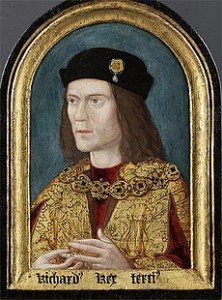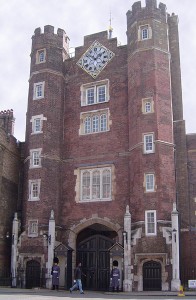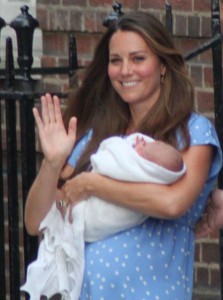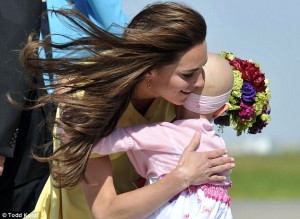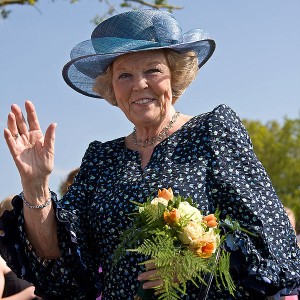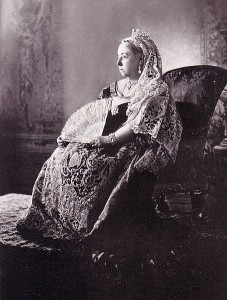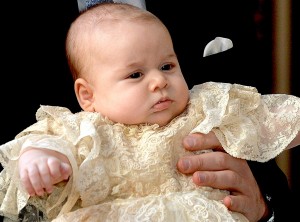
Prince George of Cambridge at his christening on October 23, 2013. Photo Credit: John Stillwell/PA Wire/Press Association via AP Images
Last week, I looked back at the key royal events from the first half of 2013. Here are the royal highlights from the past six months followed by a few predictions regarding the direction royal events will take in 2014.
July: July, 2013 became known as “The Great Kate Wait” as the world anticipated the arrival of the Duke and Duchess of Cambridge’s 1st child. On July 22, a baby boy was born. The intense media attention surrounding the arrival of the Prince suggests that the decisions William and Catherine make regarding the upbringing of their son will influence millions of parents around the world. The arrival of a son appeared to render gender neutral succession reform irrelevant for another generation but I wrote that it remains important that the United Kingdom and Commonwealth espouse gender equality through succession reform.
Once the baby Prince arrived, the next big piece of news was the announcement of his suitably royal name: George Alexander Louis. In addition to noting that George honours the regnal name of Queen Elizabeth II’s father, King George VI and Louis honours the Duke of Edinburgh’s uncle, Lord Mountbatten, I wrote that the choice of Alexander may represent a nod to the monarchy’s Scottish heritage at a time when Scotland is considering devolution.
August: In August, 2013, the controversy regarding the final resting place of Richard III’s remains intensified. A high court judge granted permission for descendants of the King’s relatives to challenge the plan to bury the King in Leicester Cathedral. The legal claimants, members of an organization called the Plantagenet Alliance, argue that Richard III would have wanted to be buried at York Minister. The legal challenge has not yet been resolved. In one of my columns, I placed Richard III’s “Bones of Contention” within the wider context of controversial royal excavations including Czar Nicholas II of Russia and his family in the 1990s.
September: In September, Prince William announced that he was leaving his job as a Search and Rescue Pilot, assuming full time royal duties following a period of transition. William also made clear that he intended to devote more time to his philanthropic initiatives, particularly wildlife conservation. While other royal commentators focused on the job that William was leaving behind, I wrote about the potential for him to make a difference through his environmental initiatives. Other members of Europe’s royal houses have discovered that the environment is a ideal cause for a multi-generational institution like the monarchy and William is building on the conservation efforts of his father and grandfather.
October: On October 23, Prince George Alexander Louis was christened at St. James’s Palace in London. The christening attracted public interest because it would be the royal baby’s first public appearance since leaving hospital as a newborn. The choice of godparents reflected William and Catherine’s desire to honour their close friends rather than foreign royalty or friends of the sovereign. The christening ceremony was followed by the Queen and three generations of heirs posing for a historic photograph. At the time of Prince George’s christening, the baby’s great-aunt, Princess Anne was in Canada in her capacity as Colonel-in-Chief of The Grey & Simcoe Foresters, the Royal Canadian Medical Service (RCMS), and the Communications and Electronics Branch.
November: On November 1, the Earl and Countess of Wessex visited Toronto, attending a black tie Gala evening in celebration of the 50th Anniversary of The Duke of Edinburgh’s Award in Canada. November also marked the launch of Magna Carta 2015 Canada website in anticipation of a historic exhibition of the Magna Carta and Charter of the Forest that will tour Canada in 2015.
December: In December, the Queen and her family gathered at Sandringham for the traditional royal Christmas. Despite speculation that the Duchess of Cambridge’s parents, Michael and Carole Middleton, and Prince Harry’s girlfriend, Cressida Bonas, would be part of the royal party, only members of the Queen’s family and their spouses joined the sovereign for Christmas. The 2013 Christmas message emphasized the Queen’s role as Head of the Commonwealth and included footage from the photo shoot that followed Prince George’s christening.
Royal News in 2014:
What Will Happen:
The Queen’s granddaughter Zara Phillips will give birth to the monarch’s 4th great-grandchild. The due date is January 14.
The Duke and Duchess of Cambridge will tour Australia and New Zealand in April, most likely with their baby son, Prince George.
On September 18, Scotland will vote on devolution. If Scotland decides to secede from the United Kingdom, the monarchy will become the main political link between England and Scotland, as it was at the time of the ascension of James VI of Scotland as James I of England of 1603.
What May Happen:
In 2014, Princess Beatrice may announce her engagement to her partner of seven years, Dave Clark. Although most 2014 royal wedding speculation is focused on Prince Harry and Cressida Bonas, Beatrice and Dave have been a couple for a much longer time and are far more likely to announce an engagement in 2014.
King Juan Carlos of Spain may announce his abdication. The 2013 abdications of Queen Beatrix of the Netherlands and King Albert II of Belgium demonstrated that retirement is becoming an increasingly acceptable choice for elderly monarchs in continental Europe. King Juan Carlos’s fragile health and declining popularity may prompt him to abdicate in favour of his son Felipe, Prince of the Asturias in 2014.
